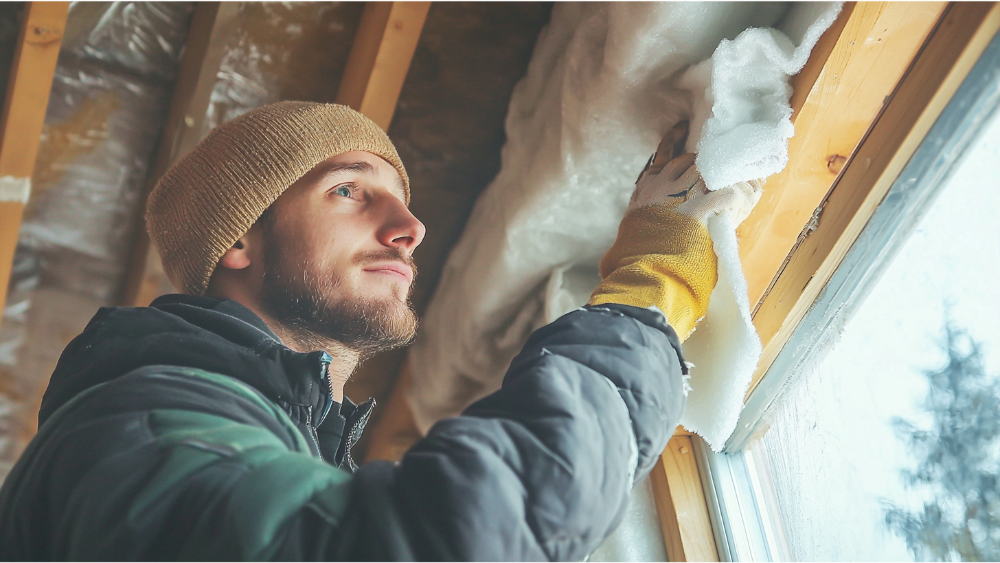How Do You Quote a Sidin...
- Mon to Fri: 09:00 am to 07:00 pm

Single-pane windows are the most common type of window found in homes. Typically made of a single sheet of glass, they lack adequate insulation, which makes them less energy-efficient during the colder months. However, there are several simple and affordable ways to insulate single-pane windows for the winter.
These methods not only help you save on heating costs but also ensure a cozier living space. From window film and weatherstripping to thermal curtains, there are options to fit every budget and style, allowing you to stay warm while enhancing the comfort of your home.

Single-pane windows are made of a single sheet of glass, unlike double-pane or triple-pane windows which have multiple layers. This means that they offer very little insulation and are not as effective at keeping heat inside the house during the winter. Single-pane windows are also more prone to drafts and can let in cold air, making your home feel colder and increasing your heating bill.
Insulating single-pane windows is important for several reasons:
By investing in proper insulation, you not only improve the effectiveness of your single-pane windows but also enhance the comfort of your home during the winter months. Additionally, better insulation can prolong the lifespan of your windows and contribute to a cozier atmosphere, making your living space an inviting sanctuary from the chilly weather outside.

There are several easy and affordable ways to insulate single-pane windows for the winter. Some options include:
Caulking is a simple and cost-effective way to seal any gaps or cracks around your window frames. Weatherstripping can also be applied along the edges of windows to create an airtight seal. These methods help prevent cold air from entering your home and keep warm air inside.

Window insulation film is another affordable option for insulating single-pane windows. It is a thin plastic sheet that can be applied directly onto your window glass, creating an extra layer of insulation. The film comes with double-sided tape and can easily be removed without damaging your windows when winter ends.
To apply window insulation film, follow these steps:
Installing insulated curtains or shades can also help insulate single-pane windows during winter. These are specially designed to trap air and create an extra layer of insulation, making them more effective than regular curtains or blinds.
To install insulated curtains or shades, follow these steps:
Window inserts are temporary, removable insulating panels that fit snugly into your window frame, creating an extra layer of insulation. They are made of clear plastic or acrylic and can easily be installed without any tools or permanent changes to your windows.
To install window inserts, follow these steps:

At Pro Superior Construction, we take pride in being industry leaders in window and insulation solutions. With years of experience and a dedicated team of skilled professionals, we recognize the significance of quality insulation for single-pane windows.
Our expertise helps keep your home energy-efficient during the colder months while improving your overall comfort. We utilize high-quality materials and the latest techniques to deliver durable results that endure over time.
Our focus on customer satisfaction means we collaborate closely with you to evaluate your needs and suggest customized solutions, guaranteeing you receive the finest products and services available.
Choosing Pro Superior Construction means you’re not just accessing a service; you’re making an investment in a warm, energy-efficient home.

Yes, bubble wrap can be an effective and affordable temporary option for insulating single-pane windows. Simply spray water onto the window glass and press the flat side of the bubble wrap onto it. The bubbles will create a layer of insulation between the glass and the room. Keep in mind that this method may not be as durable or aesthetically pleasing as other options.
No, most insulated curtains and shades are designed to still allow natural light to enter the room while providing extra insulation. However, some thicker options may limit light slightly more than others.
Yes, window insulation film should be removed when winter is over to allow natural light and air to flow into the room. Leaving it on during warmer months can cause condensation and potentially damage your windows. It is also recommended to replace the film each year for maximum effectiveness.
Storm windows are a type of window that can be installed on top of existing windows, creating an extra layer of insulation and protection against harsh weather conditions. They can be particularly useful for single-pane windows during winter.
R-value measures a material’s insulation value and its capacity to resist heat transfer. A higher R-value indicates superior insulation properties. For windows, an R-value of 3 or above is suggested to achieve optimal energy efficiency.
Insulating single-pane windows is an important step in keeping your home warm and energy-efficient during the winter. With these affordable options, you can easily create an extra layer of insulation without breaking the bank. Remember to regularly check for drafts and reapply any methods if needed to ensure maximum effectiveness. Stay warm and cozy this winter with well-insulated single-pane windows! Pro Superior Construction is here to help with all your window insulation needs. Contact us today!